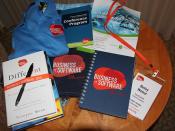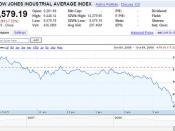Case Overview
Nike's share price had declined significantly from the start of the year. Since 1997, Nike's revenues had plateaued at around $9 billion, while net income had fallen from almost S800 million to $580 million. Nike's market share in U.S. athletic shoes had fallen from 48 percent in 1997 to 42 percent in 2000. In addition, recent supply-chain issues and the adverse effect of a strong dollar had negatively affected revenue.
Management revealed plans to address both top-line growth and operating performance. To boost revenue, the company would develop more athletic-shoe products in the mid-priced segment that it had overlooked in recent years. Nike also planned to push its apparel line, which, under the recent leadership of industry veteran Mindy Grossman had performed extremely well. On the cost side, Nike would exert more effort on expense control. Finally, company executives reiterated their long-term revenue growth targets of 8-10 percent and earnings-growth targets of above 15 percent.
Analysts' reactions were mixed. Some thought the financial targets too aggressive: others saw significant growth opportunities in apparel and in Nike's international businesses.
Key Issues
Nike was overvalued at its current share price of $42.09. Nike was under valued at discount rates below 9.4 percent. In order to build clear guidance to reveal their strategies, Joanna Cohen must estimate Nike's cost of capital. The problem is Joanna Cohen was mistaken in calculating the cost of debt using historical information. We must recalculating the cost of debt and determining WACC based on our calculation. We must turn to market yields to gauge the cost of debt.
Cost of Capital
The cost of capital acts as a link between the firm's long-term investment decisions and the wealth of the owners as determined by investors in the market place. It is the "magic number' that is...


